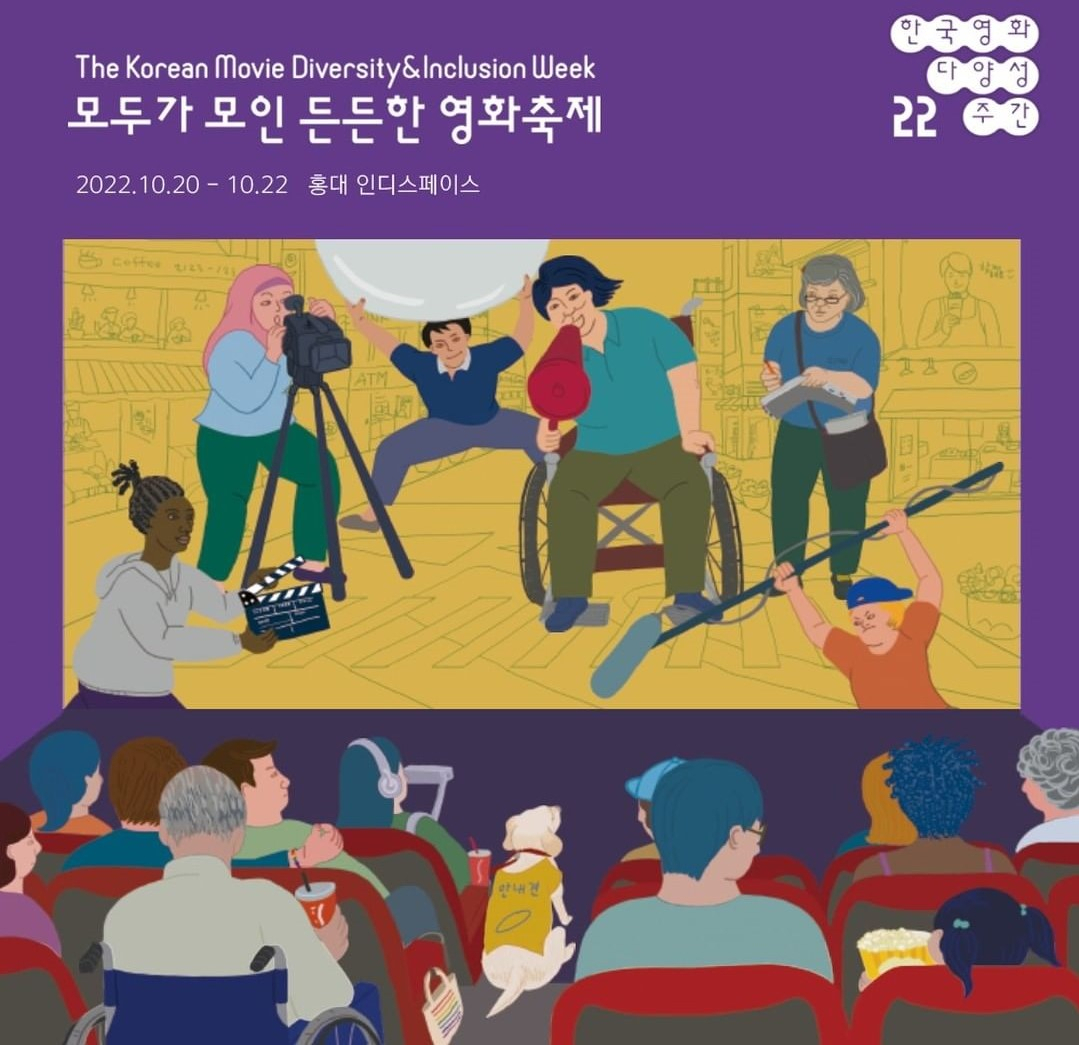Men, Seoul residents overrepresented in Korean films: study
By Hwang Dong-heePublished : Oct. 21, 2022 - 18:02

An interim report on Korean films has determined that roles for men and characters living in Greater Seoul are overrepresented.
As part of the Korean Movie Diversity & Inclusion Week, the report for the Center for Gender Equality in Korean Film, named "Deundeun," analyzed 446 Korean films in the top 40 percent of box office hits -- commercial films and independent films separately -- and streaming original films released from 2017 to 2021.
The research looked at the main lead characters from the credits of the films and compared them to the actual statistics of Korean society.
The report selected gender, race, age, region, class, disability and sexuality as seven indicators for diversity analysis. This is the first of its kind to analyze diversity in Korean films, according to the center.
By region, the proportion of main characters living in Greater Seoul -- Seoul, Incheon and Gyeonggi Province -- accounted for about 60.5 percent of all main characters, which is 10.1 percentage points higher than the actual demographics. About 50.4 percent of the total population live in the area, according to a 2021 report by Statistics Korea.
Meanwhile, Busan and the North and South Gyeongsang provinces were underrepresented as characters living in the areas marked 14.2 percent, which is 10.5 percentage points lower than the actual population of 24.7 percent.
By gender, male characters outnumbered female characters with 61.6 percent of the lead characters being male. Demographically, 49.8 percent of Koreans are male.
By age, characters between the ages 40 and 49 were the most represented with 25.2 percent, 9.5 percentage points higher than the 15.8 percent of the population that falls into that category demographically. Those aged 60 and over accounted for 25.9 percent demographically, but they accounted for 11.2 percent of main characters. The statistics are based on this year’s report on the resident registration population by the Ministry of the Interior and Safety.
According to a 2021 report by Statistics Korea, migrants accounted for 3 percent of the total population. The rate of representation of foreigners as main characters stood at 4 percent.
The research team noted that the report included Thai-Korean horror film “The Medium” (2021), produced by Na Hong-jin, and “Claire’s Camera” (2018), by Hong Sang-soo and starring Isabelle Huppert alongside Kim Min-hee.
In films, 9 percent of the main characters were portrayed as disabled, which is higher than the actual 5 percent of the population. However, the latter number is based on the Ministry of Health and Welfare’s data that excluded people with dementia, while this report included dementia as a disability.
By sexual orientation, 3 percent were portrayed as LGBTQ protagonists in Korean films. However, the report noted that about 7 percent of the population is attracted to the same sex, according to recent reports from Gallup and Ipsos.
The Korean Movie Diversity & Inclusion Week is organized by the Korean Film Council and Women in Film Korea and hosted by the Center for Gender Equality in Korean Film with the aim of discovering and promoting the value of diversity and inclusiveness in Korean cinema.
The three-day festival is being held at Indie Space in Hongdae, Seoul, from Thursday to Saturday.
Six films were selected for screening at the venue, while directors or starring actors hold talk sessions with the audience.
The films include director Yoon Ga-eun’s “The House of Us,” Kim Mi-jo’s “Gull,” Lee Han’s “Innocent Witness,” Kim Jin-yu’s “Bori” and Lee Il-ha’s “I am More.” Japanese director Ryusuke Hamaguchi’s “Drive My Car” held a special screening on Friday with Hamaguchi joining the talk session online.
Other programs include “Literature meets film,” where Korean writers and directors have a conversation on creation and diversity.
The full report on diversity and inclusiveness in films will be released in late November.




















![[Today’s K-pop] BTS pop-up event to come to Seoul](http://res.heraldm.com/phpwas/restmb_idxmake.php?idx=642&simg=/content/image/2024/04/17/20240417050734_0.jpg&u=)